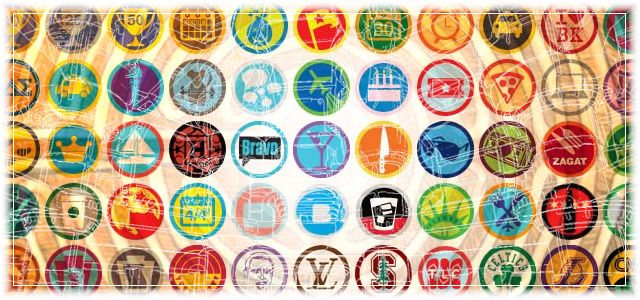What Is Gamification?
Well the wiki says "Gamification is the use of game design techniques[1] and mechanics to solve problems and engage audiences. Typically gamification applies to non-game applications (also known as "funware"),[2] particularly consumer-oriented web and mobile sites, in order to encourage people to adopt the applications. It also strives to encourage users to engage in desired behaviors in connection with the applications.[3] Gamification works by making technology more engaging,[4] and by encouraging desired behaviors, taking advantage of humans' psychological predisposition to engage in gaming.[5] The technique can encourage people to perform chores that they ordinarily consider boring, such as completing surveys, shopping, or reading web sites.[4]"

This definition is by all means correct but it's a high-level generalization of the idea [behind] gamification. Nowhere in that definition is the word that should roll off your tongue during a discussion on this topic – "entertainment." Making content, digital tasks, and the desire to return to a website or social channel (e.i. "interactive retention strategies") more entertaining.
This is done in a myriad of ways:
- storyline behavior
- assignment of goals and tasks
- achievement "badges"
- virtual goods or currency
- achievement levels
- scoring, ranking and "leader boards"
- sharing a comment
- a progress bar or other visual meter to indicate how close people are to completing a task a company is trying to encourage, such as completing a social networking profile or earning a frequent shopper loyalty award[7]
- virtual currency,
- Virtual ecomomies
- Virtual goods
- Virtual service
- Virtual/digitial online personas
- Systems for awarding, redeeming, trading, gifting and otherwise exchanging points
- Challenges between users
- Embedding small casual games within other activities
Over the next few posts we will begin to break down why (and for who) these elements work. Additionally we will look at creating "game mechanics" for your website, content and campaigns. Throughout the next posts I will be using several types of gamefication in my discussion and I'll do my best to reference which website/game and its tactic. They will be:
Foursquare - This is a Location Based Marketing (LBM) Tool as well - this location based checkin phone application uses badges and points to create an entertaining atmosphere and reason for return. This tool, unlike some website, will also leverage your phone's GPS to determine 'gameplay' to your physical location in the "real world" (RW) and in "real time" (RT).
Empire Avenue (link to post) - This is a 'social game' that is primarily website based. Like "Cityville™" (http://en.wikipedia.org/wiki/CityVille) or "Mafia Wars™" (http://en.wikipedia.org/wiki/Mafia_wars). And while these are puritanically more games in the traditional sense, I will pull from their thinking to explain why people use them and the behavior it creates.
GetGlue - This is a mobile/online site that asks you to check-in on your media digestion behavior such as television, music and movies.
CommonRed - This upstart social network is using the kitchen sink of gamifcation; some right, some wrong and we will analyze its growth and tactic directives throughout our discussion.